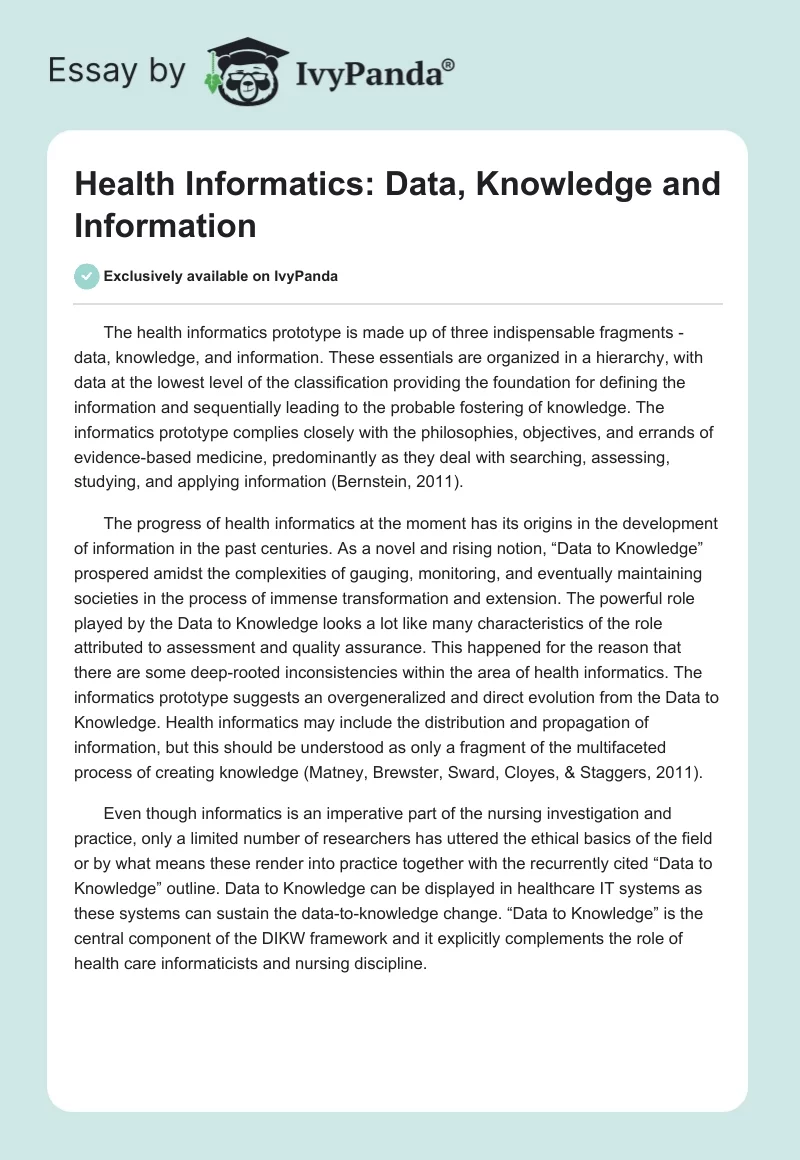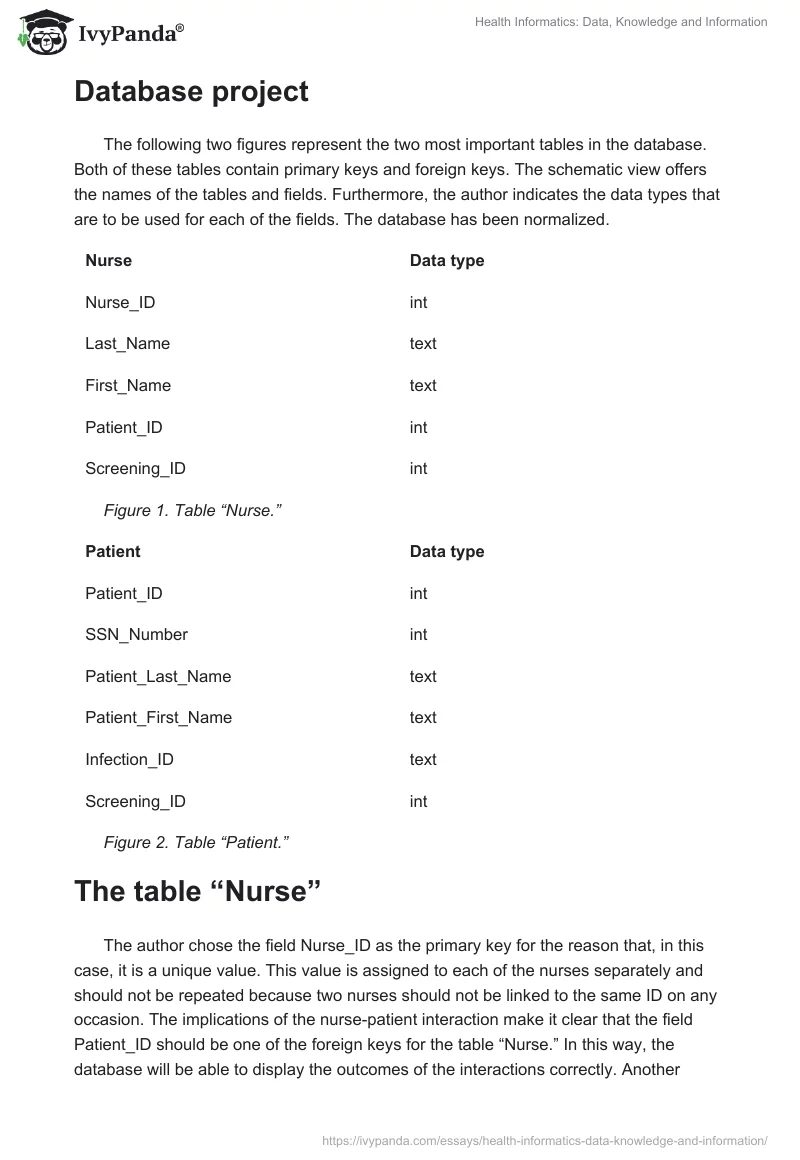The health informatics prototype is made up of three indispensable fragments – data, knowledge, and information. These essentials are organized in a hierarchy, with data at the lowest level of the classification providing the foundation for defining the information and sequentially leading to the probable fostering of knowledge. The informatics prototype complies closely with the philosophies, objectives, and errands of evidence-based medicine, predominantly as they deal with searching, assessing, studying, and applying information (Bernstein, 2011).
The progress of health informatics at the moment has its origins in the development of information in the past centuries. As a novel and rising notion, “Data to Knowledge” prospered amidst the complexities of gauging, monitoring, and eventually maintaining societies in the process of immense transformation and extension. The powerful role played by the Data to Knowledge looks a lot like many characteristics of the role attributed to assessment and quality assurance. This happened for the reason that there are some deep-rooted inconsistencies within the area of health informatics. The informatics prototype suggests an overgeneralized and direct evolution from the Data to Knowledge. Health informatics may include the distribution and propagation of information, but this should be understood as only a fragment of the multifaceted process of creating knowledge (Matney, Brewster, Sward, Cloyes, & Staggers, 2011).
Even though informatics is an imperative part of the nursing investigation and practice, only a limited number of researchers has uttered the ethical basics of the field or by what means these render into practice together with the recurrently cited “Data to Knowledge” outline. Data to Knowledge can be displayed in healthcare IT systems as these systems can sustain the data-to-knowledge change. “Data to Knowledge” is the central component of the DIKW framework and it explicitly complements the role of health care informaticists and nursing discipline.
Database project
The following two figures represent the two most important tables in the database. Both of these tables contain primary keys and foreign keys. The schematic view offers the names of the tables and fields. Furthermore, the author indicates the data types that are to be used for each of the fields. The database has been normalized.
Figure 1. Table “Nurse.”
Figure 2. Table “Patient.”
The table “Nurse”
The author chose the field Nurse_ID as the primary key for the reason that, in this case, it is a unique value. This value is assigned to each of the nurses separately and should not be repeated because two nurses should not be linked to the same ID on any occasion. The implications of the nurse-patient interaction make it clear that the field Patient_ID should be one of the foreign keys for the table “Nurse.” In this way, the database will be able to display the outcomes of the interactions correctly. Another foreign key for this table is Screening_ID. This would help link the nurse to the patients who necessitate screening. Moreover, this would allow displaying the information concerning past screenings (including the results and diagnoses).
The table “Patient”
Due to the universal uniqueness of the Social Security Number, it is chosen as the primary key for the table Patient. The field Patient_ID would be suitable, but the utilization of the SSN seems reasonable for the reason that a conglomeration of various “ID” fields from different tables would eventually leave the developers confused. The foreign keys are Patient_ID, Screening_ID, and Infection_ID. I chose these foreign keys because, in this case, the goal is to provide the nurses with the datasheet that is as complete as possible. The more information the report contains, the easier it will be to keep the statistics and conduct further research on the various types of infections and their expected and predictable outcomes.
References
Bernstein, J. H. (2011). The Data-Information-Knowledge-Wisdom Hierarchy and its Antithesis. Nasko, 2(1), 68-75. Web.
Matney, S., Brewster, P. J., Sward, K. A., Cloyes, K. G., & Staggers, N. (2011). Philosophical Approaches to the Nursing Informatics Data-Information-Knowledge-Wisdom Framework. Advances in Nursing Science, 34(1), 6-18. Web.


